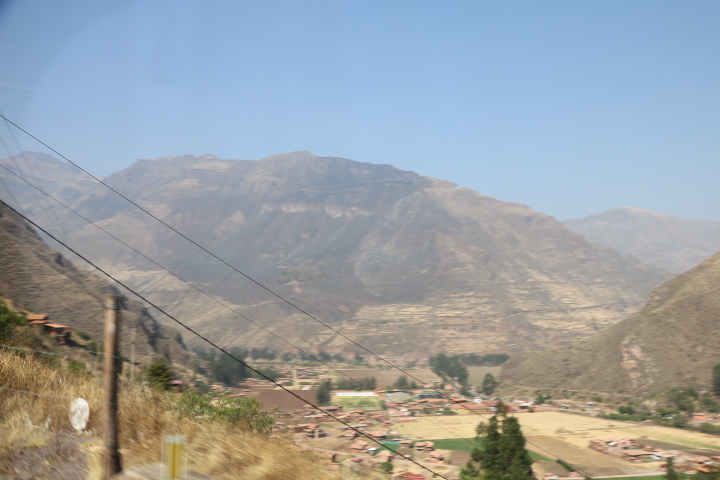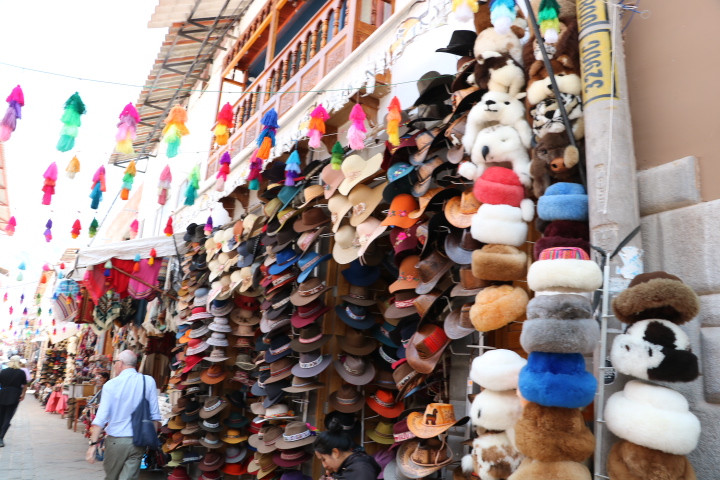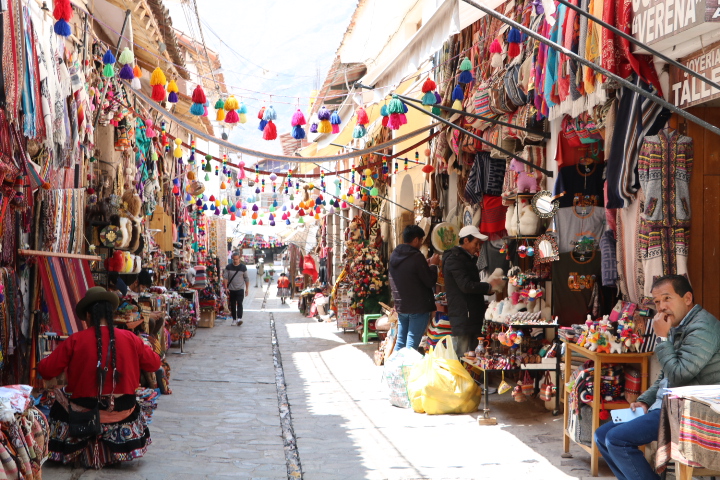We are in the Sacred Valley, a 42km long fertile area formed by the Vilcanota and Urubamba Rivers flowing from the watershed above Lake Titicaca to the Amazon. Along the valley we saw crops of maize, alfalfa and potatoes all grown here because of the alluvium but in Inca times they were known as ‘a gift of the Sun’, hence Sacred Valley. We are at 2600m above sea level but in a very deep rift valley.


We visited the Pisac ruins, an Inca citadel on a triangular plateau supported by basalt walled terraces which sweep around the south and east sides of the mountains. These terraces enabled food crops to be grown but with a sophisticated irrigation and drainage system prevented rotational slumping.







Wherever we are in the world there is always a market for handicrafts, sold as handmade, with people waiting to pretend to make the products. They appear to ‘be switched on’ by the arrival of visitors. Today it was silver. Outside the silver shop was a real market.









Around the region trails are still visible and can be followed on foot or by road and they link former Inca settlements. Today names of places such as Ollantaytambo are evidence of their use along the trade routes providing places to trade and stay overnight. “Tambo” is the same as caravanserai on the Middle Eastern Silk Roads or the motorway service stations of today.
After lunch we visited the nearby terraces with giant basalt protecting walls at an altitude of 2769m.


